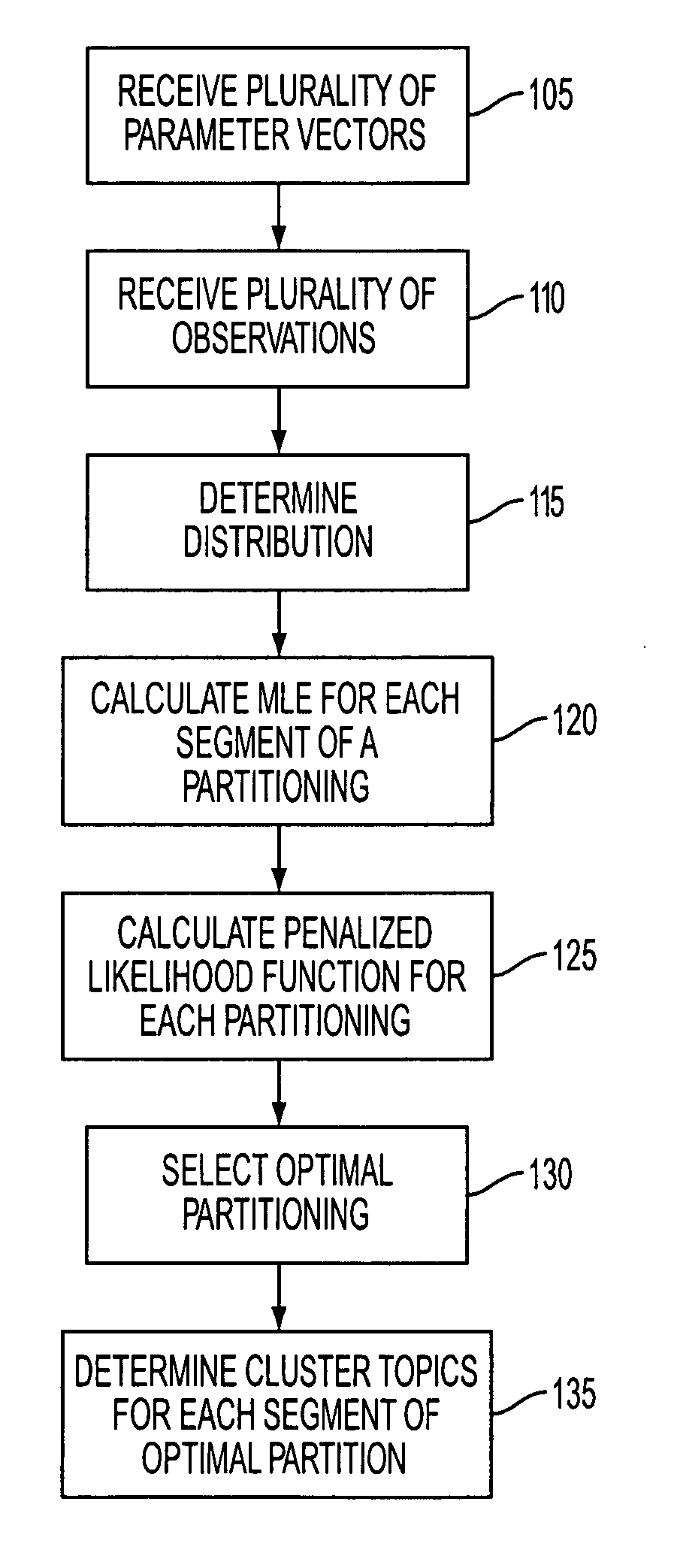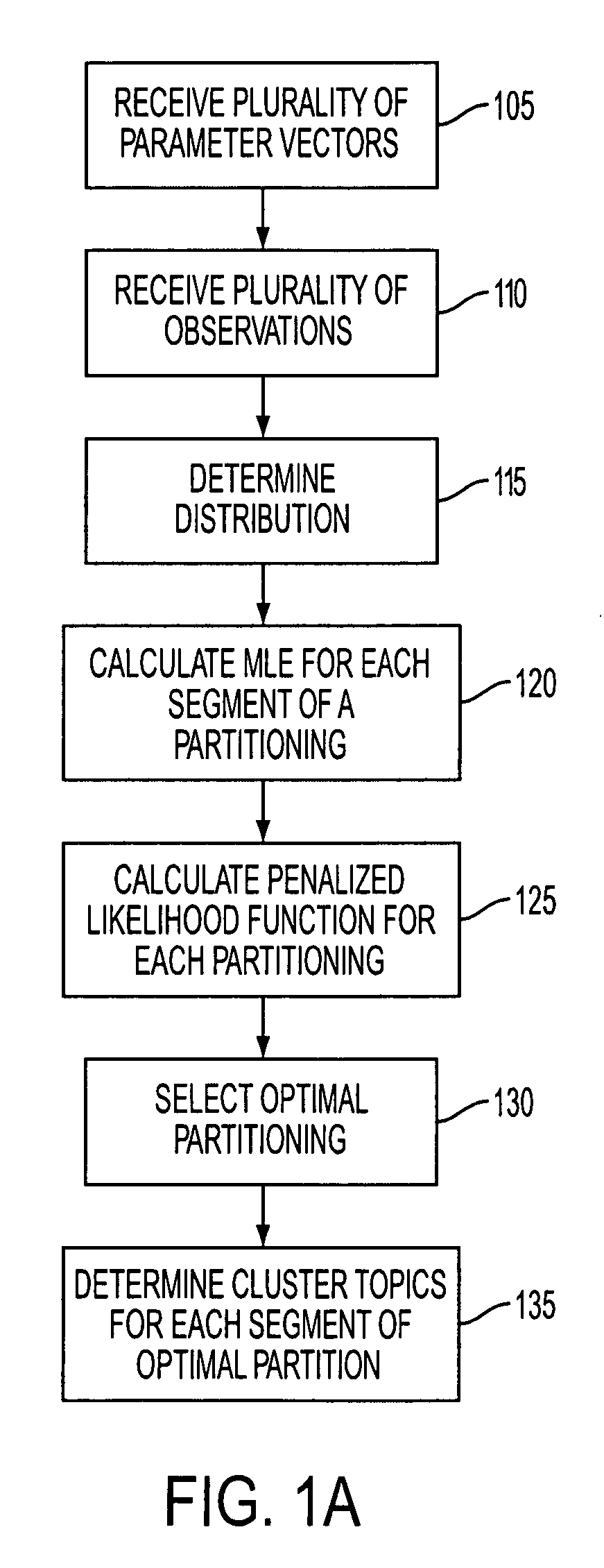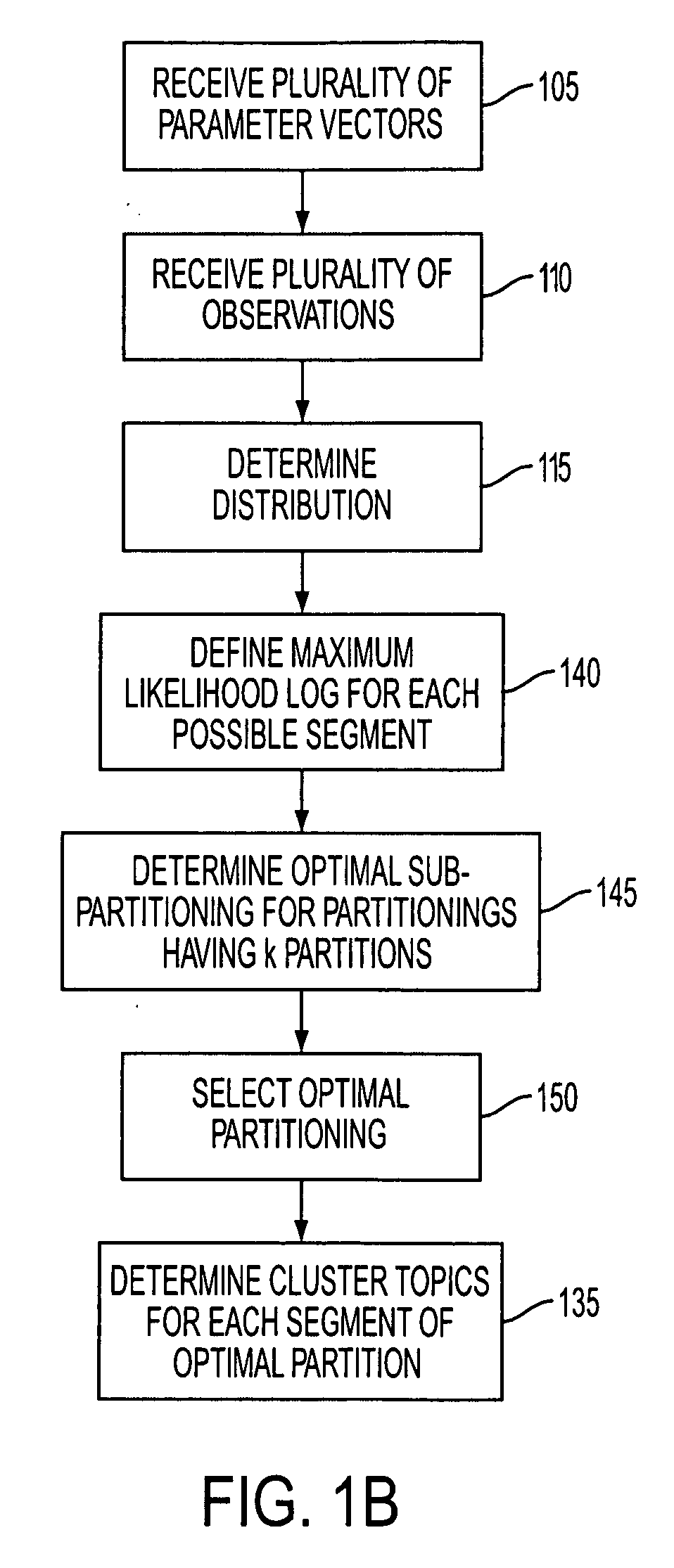Document clustering
a document clustering and data technology, applied in the field of database creation, ordering and management, can solve problems such as mathematical difficulties
- Summary
- Abstract
- Description
- Claims
- Application Information
AI Technical Summary
Benefits of technology
Problems solved by technology
Method used
Image
Examples
Embodiment Construction
[0020] A document collection may be a grouping of documents. A set of document collections may be considered to be “time-dependent” if each document collection contains documents pertaining to non-overlapping periods of time. For example, a set of document collections, where each document collection pertains to one or more service logs reported in a month associated with the particular document collection, may be considered time-dependent. Time-dependent document collections may be ordered from earliest to latest to produce a set of “time-ordered” document collections.
[0021] Clustering time-ordered document collections may be performed by determining a plurality of probabilities of term occurrences as expressed by, for example, a multinomial distribution. Accordingly, each document collection may be an observation of a distribution with unknown, but estimable, parameters. In an alternate embodiment, a Bernoulli distribution or some other distribution may be used to represent a docu...
PUM
 Login to View More
Login to View More Abstract
Description
Claims
Application Information
 Login to View More
Login to View More - R&D
- Intellectual Property
- Life Sciences
- Materials
- Tech Scout
- Unparalleled Data Quality
- Higher Quality Content
- 60% Fewer Hallucinations
Browse by: Latest US Patents, China's latest patents, Technical Efficacy Thesaurus, Application Domain, Technology Topic, Popular Technical Reports.
© 2025 PatSnap. All rights reserved.Legal|Privacy policy|Modern Slavery Act Transparency Statement|Sitemap|About US| Contact US: help@patsnap.com



